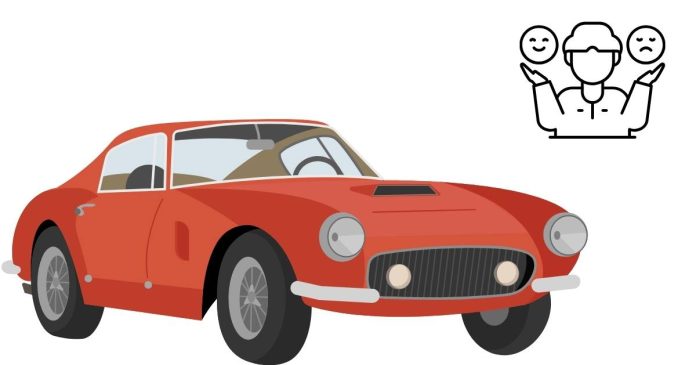Owning an Italian car can be a thrilling experience, but like anything, it comes with its own set of pros and cons. Italian cars are known for their iconic design, performance, and passion, but they also have some unique challenges that owners should consider. Here’s a breakdown:
Pros of Owning an Italian Car
1. Stylish Design
- Italian cars are renowned for their elegant and timeless design. Whether it’s a Ferrari, Lamborghini, Maserati, Alfa Romeo, or Fiat, Italian cars are often seen as a symbol of style and craftsmanship.
- These cars are designed to be visually appealing, and owning one often feels like owning a work of art.
2. Performance and Handling
- Italian cars are often engineered for performance, especially sports cars. Brands like Ferrari and Lamborghini are known for their exceptional acceleration, speed, and precision handling.
- Even everyday brands like Alfa Romeo offer dynamic driving experiences, making them enjoyable to drive for car enthusiasts.
3. Passion and Heritage
- Italian automakers are famous for their passion for driving and motorsport heritage. Whether it’s racing history or the philosophy behind the cars, owning an Italian car often feels like connecting with a legacy of innovation and performance.
- The emotional appeal is also a big draw. Many people buy Italian cars because they enjoy the excitement of driving something that’s been crafted with passion.
4. Unique and Rare
- Italian cars tend to stand out from other vehicles on the road. Brands like Maserati and Ferrari aren’t commonly seen, which can make the ownership experience feel more exclusive.
- For some, owning a rare car is a status symbol and a way to express individuality.
5. Sound and Exhaust Note
- Many Italian cars, particularly Ferraris and Lamborghinis, are known for their amazing exhaust notes. The distinctive sound of the engine is a part of the driving experience that enthusiasts love.
Cons of Owning an Italian Car
1. Expensive Maintenance and Repairs
- Italian cars often come with high maintenance costs. While the initial price might be appealing, upkeep (including regular servicing, parts, and labor) can be costly.
- Brands like Ferrari and Lamborghini require specialized mechanics, and parts may be expensive or hard to find. Even simpler models like Fiat or Alfa Romeo can be pricier to repair than their non-Italian counterparts.
2. Reliability Issues
- Historically, some Italian cars have been less reliable than their German or Japanese counterparts. Alfa Romeo, for instance, has faced criticism for inconsistent build quality and reliability issues.
- While improvements have been made in recent years, older models or high-performance cars might still encounter issues with electrical systems, cooling, and suspension, especially if they are not properly maintained.
3. High Insurance Costs
- Due to the high value of many Italian sports cars and their performance capabilities, insurance premiums for Italian cars can be steep.
- The costs will depend on the car’s model, age, and your driving record, but expect to pay significantly more for insurance than you would for a more common car.
4. Limited Practicality
- Many Italian sports cars, especially the high-performance ones, are designed for style and performance, not necessarily practicality.
- Models like Ferraris and Lamborghinis have very limited cargo space, difficult entry/exit, and are not ideal for daily commutes or family use. For those looking for a practical, all-around vehicle, Italian sports cars might not be the best fit.
5. Fuel Efficiency
- While Italian sports cars can be exhilarating to drive, they often come with poor fuel economy due to their high-performance engines.
- Sports car models (e.g., Ferrari, Lamborghini) have large engines designed for speed, which means they consume more fuel compared to standard cars.
6. Parts Availability
- Depending on the model and age of the car, getting parts for Italian vehicles can be tricky. Certain parts for exotic brands like Ferrari and Maserati can be expensive and require long waiting periods.
- For brands like Fiat and Alfa Romeo, parts may be more accessible, but some models may still face challenges if they are not as widely available in certain regions.
7. Potential for Overheating
- Some Italian cars, especially older models or those with performance engines, may be more prone to overheating, particularly in warmer climates or after aggressive driving.
- Regular maintenance and coolant system checks are essential to avoid such issues.
Summary
Pros:
- Stylish and iconic design that stands out.
- Impressive performance and handling, ideal for driving enthusiasts.
- Heritage and passion associated with the brand.
- Exclusivity and rarity, making them desirable.
- Engaging driving experience, including a signature exhaust sound.
Cons:
- Expensive maintenance and repairs, especially for high-end models.
- Potential reliability issues that can lead to costly repairs.
- High insurance premiums due to the value and performance of the car.
- Limited practicality for daily use or family needs.
- Poor fuel economy for many models.
- Parts availability and potential difficulty finding specific components.
If you love cars for their style, performance, and history, an Italian car can be a dream come true. But it’s essential to consider the costs and potential challenges before deciding to make one your own.


